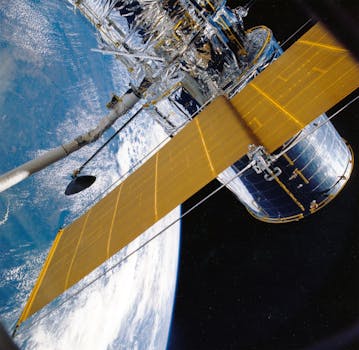The Future of Satellites: Revolutionizing Global Communication and Exploration

The Future of Satellites: Revolutionizing Global Communication and Exploration
The future of satellites is rapidly evolving, with advancements in technology and increasing demand for global communication and space exploration. The satellite industry has come a long way since the launch of the first artificial satellite, Sputnik, in 1957. Today, satellites play a vital role in our daily lives, from providing internet connectivity and navigation to enabling global communication and weather forecasting.
Advancements in Satellite Technology
Recent years have seen significant advancements in satellite technology, with the development of smaller, more efficient, and cost-effective satellites. The use of CubeSats, for example, has revolutionized the satellite industry by providing a low-cost and modular platform for a wide range of applications, from Earth observation to communication. Additionally, the development of reusable launch vehicles, such as SpaceX’s Falcon 9, has significantly reduced the cost of launching satellites into space.
Another significant advancement in satellite technology is the development of satellite constellations, which involve a large number of satellites working together to provide global coverage. These constellations have the potential to provide high-speed internet connectivity to remote and underserved areas, bridging the digital divide and enabling global communication. Companies such as OneWeb and Amazon’s Kuiper Systems are already working on deploying satellite constellations, with the aim of providing global internet coverage in the near future.
Applications of Satellites in Global Communication and Exploration
Satellites have a wide range of applications in global communication and exploration, from providing internet connectivity and navigation to enabling weather forecasting and Earth observation. Satellites are also used in search and rescue operations, disaster response, and environmental monitoring. The use of satellites in these applications has significant benefits, including improved communication, increased efficiency, and enhanced safety.
In addition to their practical applications, satellites also play a critical role in advancing our understanding of the universe. Space agencies such as NASA and the European Space Agency (ESA) use satellites to study the Earth’s climate, the solar system, and the universe as a whole. Satellites have enabled us to study the Earth’s magnetic field, the aurora borealis, and the solar wind, among other phenomena.
Challenges and Opportunities in the Satellite Industry
Despite the many advancements and innovations in the satellite industry, there are still significant challenges to be addressed. One of the major challenges is the issue of space debris, which poses a significant threat to the safety and sustainability of space exploration. The increasing number of satellites in orbit has also raised concerns about congestion and interference, which could impact the performance and reliability of satellite communications.
However, these challenges also present opportunities for innovation and growth. The development of new technologies and strategies for mitigating space debris and managing congestion could create new business opportunities and drive investment in the satellite industry. Additionally, the increasing demand for satellite-based services, such as global communication and Earth observation, is expected to drive growth and innovation in the industry.
Conclusion
In conclusion, the future of satellites is rapidly evolving, with advancements in technology and increasing demand for global communication and space exploration. The satellite industry has come a long way since the launch of the first artificial satellite, and it is expected to continue to play a vital role in our daily lives. As the industry continues to grow and innovate, it is likely to present significant opportunities for investment, innovation, and advancement.